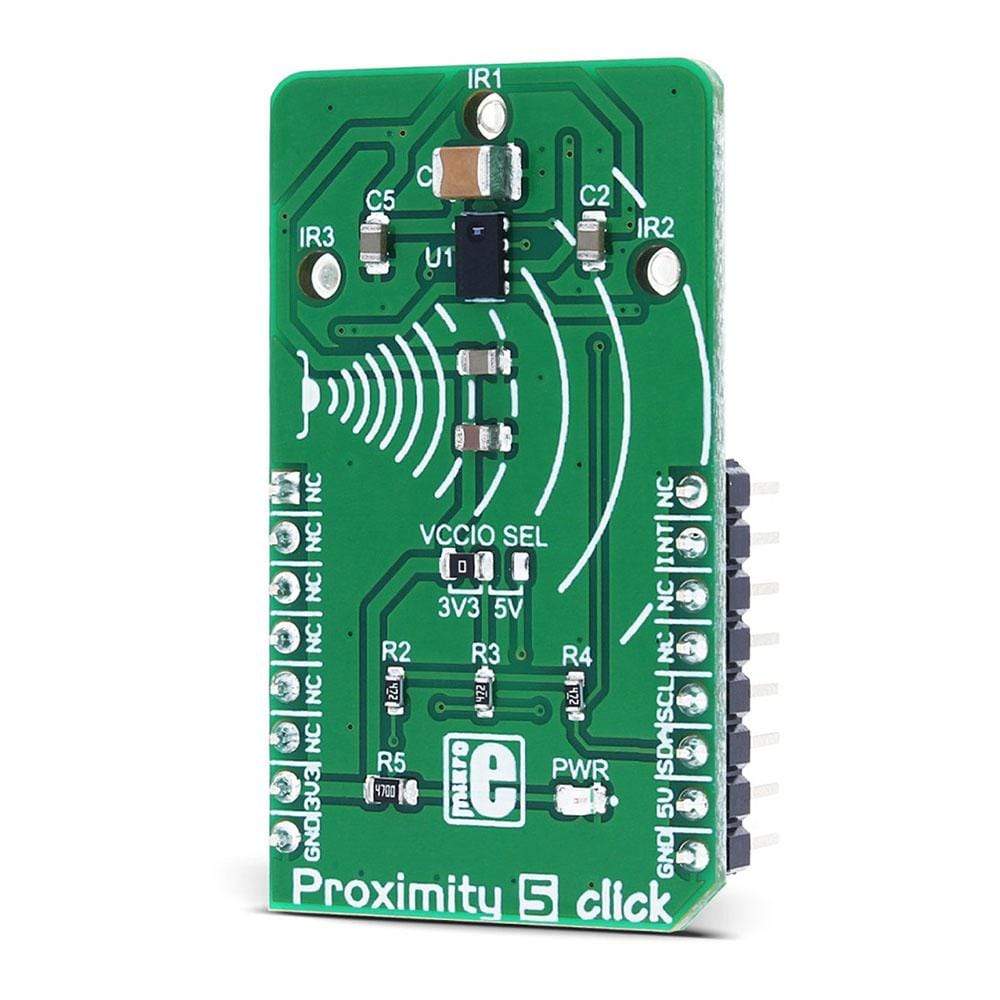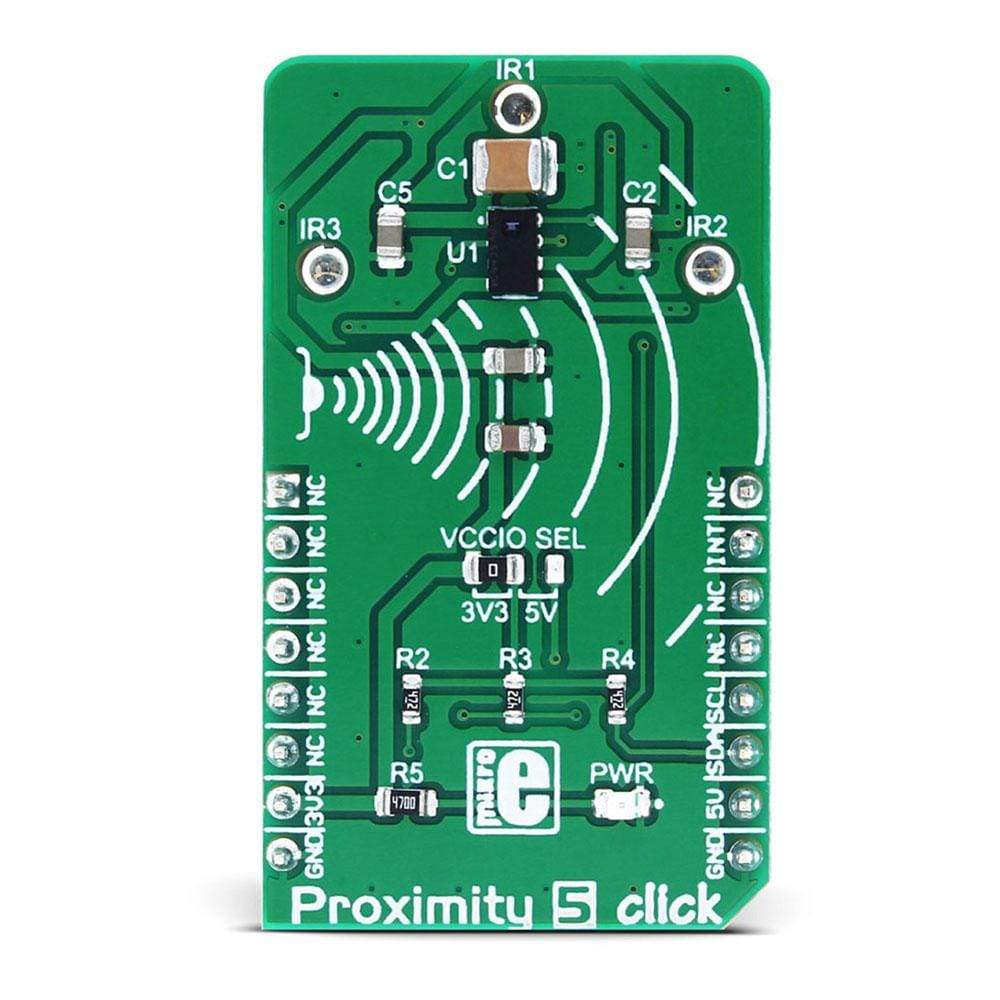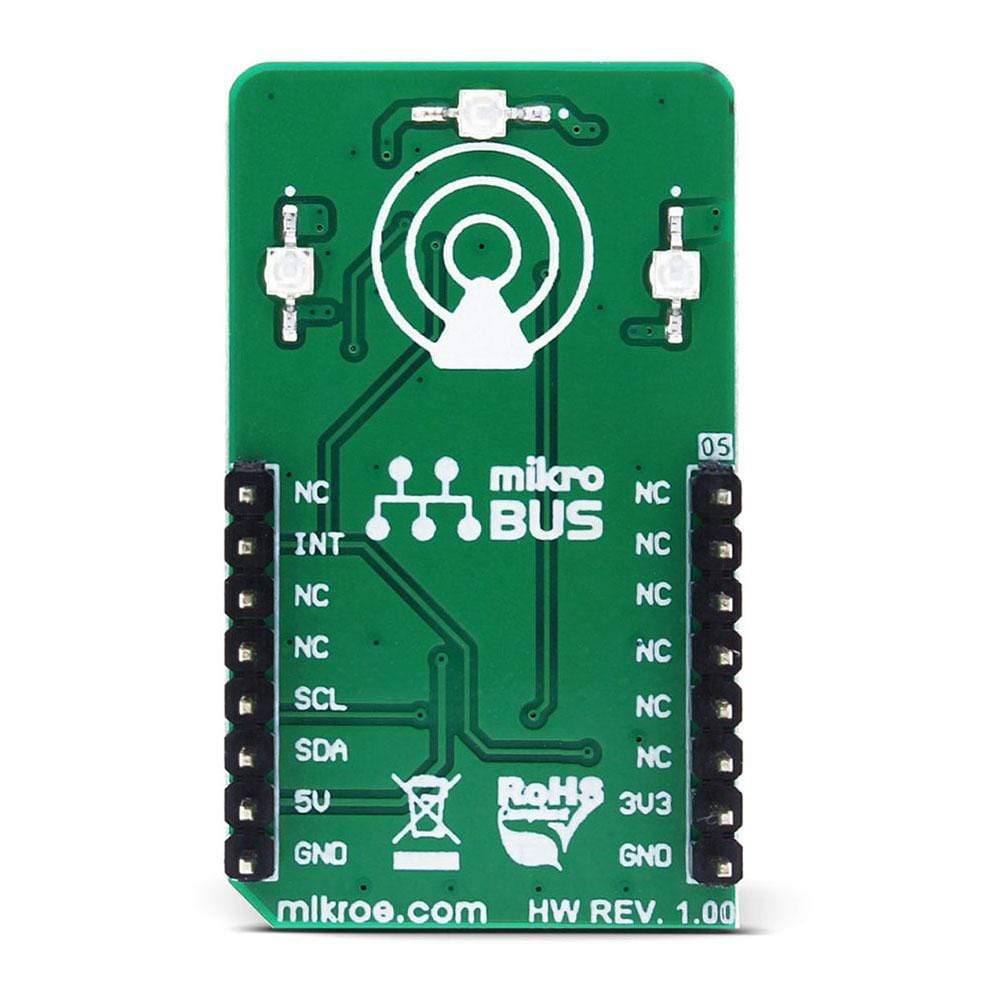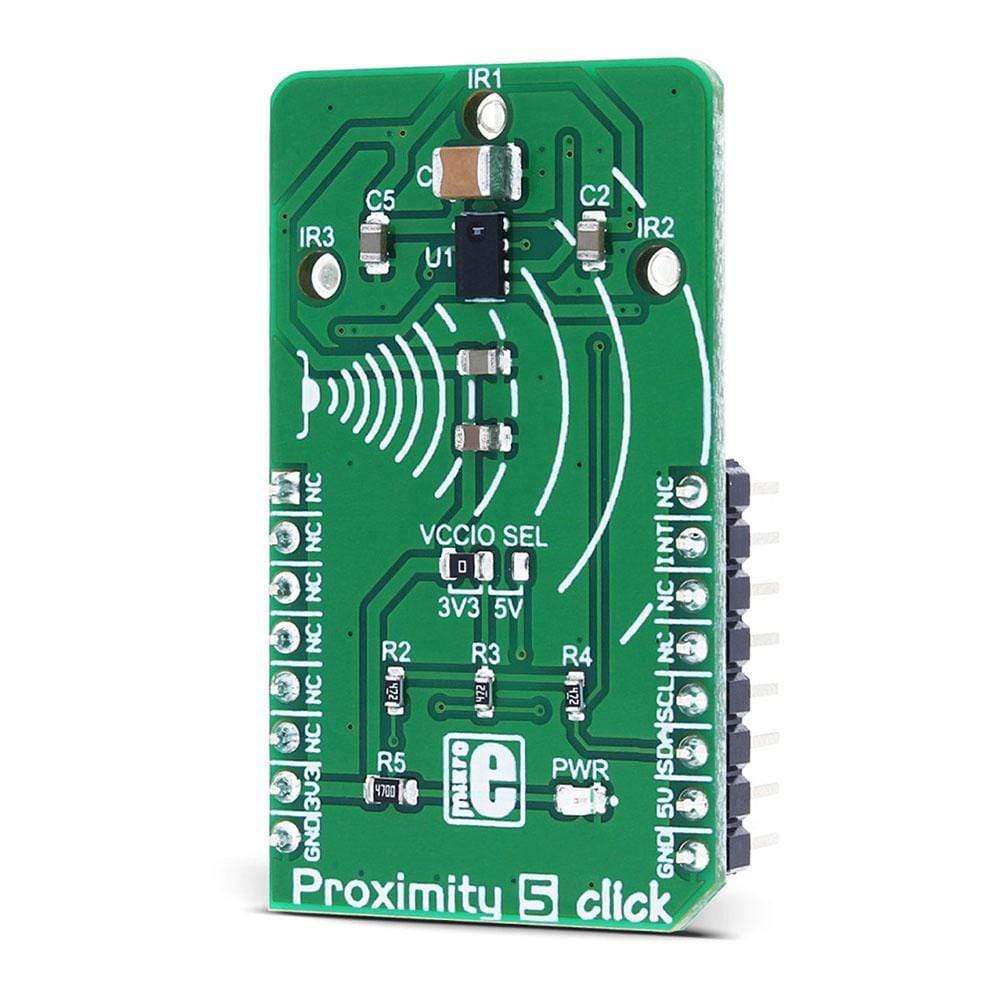
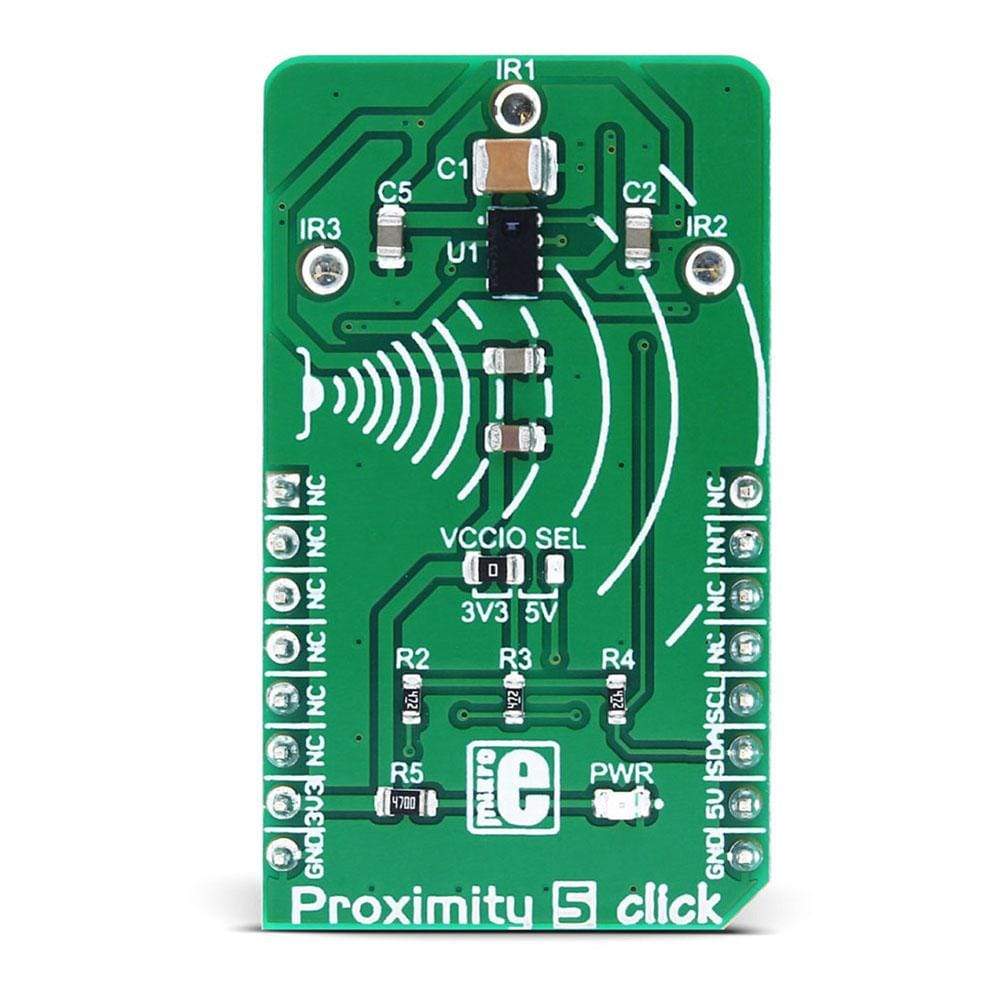
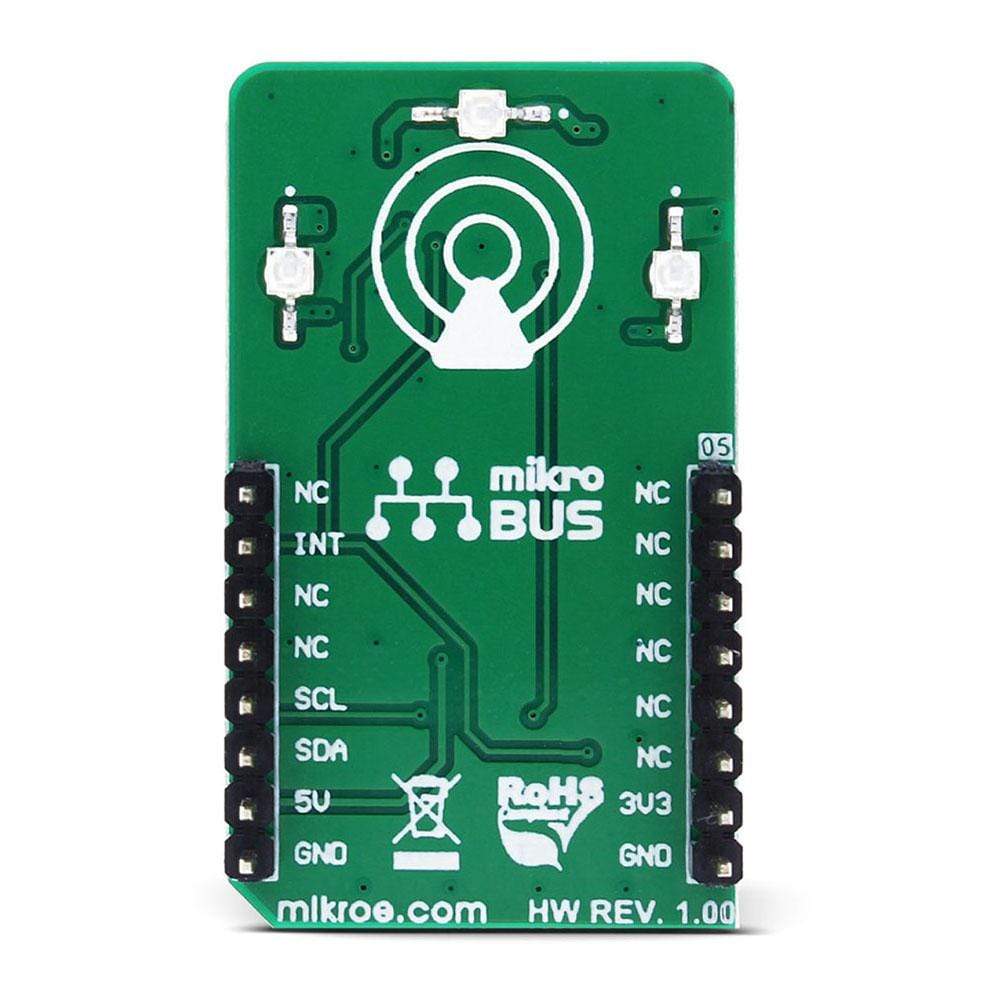
Overview
The Proximity 5 Click Board™ is a very accurate and reliable proximity sensing (PS) and ambient light sensing (ALS) device, equipped with the state-of-the-art PS and ALS sensor. The signal processing and conditioning section, three IR LED drivers, and the low noise analogue front end with the PS and ALS photo-sensitive elements, are all integrated into the sensor IC, ensuring very accurate and reliable readings, while reducing the workload of the host MCU.
The proprietary Filtron technology provides near-human eye light spectrum sensitivity and a top-class background light cancellation scheme for the ALS section, additionally reducing the workload of the MCU. Finally, the programmable interrupt engine reduces the MCU workload, even more, saving the host MCU of constant polling of the sensor for data.
Downloads
Le Proximity 5 Click Board™ est un dispositif de détection de proximité (PS) et de lumière ambiante (ALS) très précis et fiable, équipé du capteur PS et ALS de pointe. La section de traitement et de conditionnement du signal, trois pilotes de LED IR et le frontal analogique à faible bruit avec les éléments photosensibles PS et ALS sont tous intégrés dans le circuit intégré du capteur, garantissant des lectures très précises et fiables, tout en réduisant la charge de travail du microcontrôleur hôte.
La technologie propriétaire Filtron offre une sensibilité du spectre lumineux proche de celle de l'œil humain et un système d'annulation de la lumière d'arrière-plan de premier ordre pour la section ALS, réduisant ainsi encore davantage la charge de travail du MCU. Enfin, le moteur d'interruption programmable réduit encore davantage la charge de travail du MCU, évitant au MCU hôte d'interroger constamment le capteur pour obtenir des données.
| General Information | |
|---|---|
Part Number (SKU) |
MIKROE-2984
|
Manufacturer |
|
| Physical and Mechanical | |
Weight |
0.019 kg
|
| Other | |
Country of Origin |
|
HS Code Customs Tariff code
|
|
EAN |
8606018712786
|
Warranty |
|
Frequently Asked Questions
Have a Question?
Be the first to ask a question about this.

